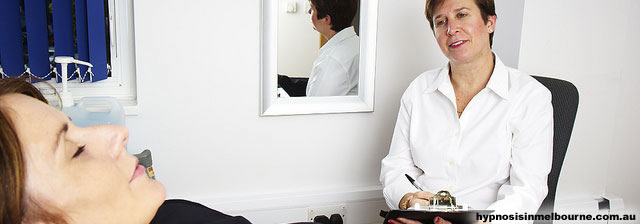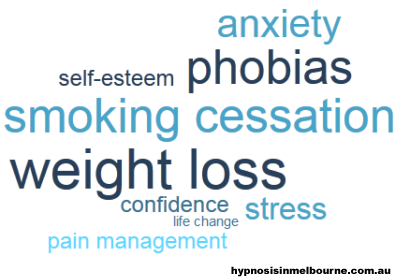Hypnotherapy versus CBT: October Research Snippet
This month’s research snippet is about a very important treatment outcome study on public-speaking anxiety, a clinical trial comparing an established (evidence-based) CBT protocol for social phobia (social anxiety disorder) against the same protocol augmented by hypnosis, and a third (waiting list) control group.
 The study was published in 1997 and has been frequently-cited since as providing evidence of the “additive” value of hypnosis as an adjunct to CBT and potentially other evidence-based treatments. I’ve decided to summarise it this month because it’s probably one of the most important treatment outcome studies available in relation to hypnotherapy, and so NCH members should be familiar with its findings, and because the study was based on the doctoral dissertation of Nancy Schoenberger, the main author, who was supervised by Prof. Irving Kirsch, one of the speakers at this year’s NCH Extravaganza. So if you’re lucky you may have the opportunity to ask Prof. Kirsch about this study yourselves! In a nutshell, the authors conclude: ”the addition of hypnosis to cognitive behavioural treatment enhanced the effects of treatment.”
The study was published in 1997 and has been frequently-cited since as providing evidence of the “additive” value of hypnosis as an adjunct to CBT and potentially other evidence-based treatments. I’ve decided to summarise it this month because it’s probably one of the most important treatment outcome studies available in relation to hypnotherapy, and so NCH members should be familiar with its findings, and because the study was based on the doctoral dissertation of Nancy Schoenberger, the main author, who was supervised by Prof. Irving Kirsch, one of the speakers at this year’s NCH Extravaganza. So if you’re lucky you may have the opportunity to ask Prof. Kirsch about this study yourselves! In a nutshell, the authors conclude: ”the addition of hypnosis to cognitive behavioural treatment enhanced the effects of treatment.”
The study involved 62 participants with severe public-speaking anxiety. They were divided into three groups,
Standard CBT (based on Heimberg’s protocol for social phobia)
CBT+Hypnosis (Cognitive-behavioural hypnotherapy, CBH)
Waiting list control, i.e., a group who received no treatment to control for the effect of spontaneous remission, etc.
The researchers emphasise the established finding that relaxation is not a necessary component of hypnosis (hypnosis is not a “state of relaxation”), although it featured as a treatment component in this study. (This key misconception is virtually extinct among modern researchers but is still fairly widespread among hypnotherapists.)
In sum, the hypnotic treatment included all components of the cognitive behavioural treatment. It differed from the nonhypnotic treatment only in the following ways: (a) relaxation training was termed “hypnosis” and contained reference to entering hypnosis, (b) relaxation practice at home was termed “self-hypnosis”, (c) automatic thoughts were termed self-suggestions, and (d) suggestions for improvement were given following the hypnotic induction.
Participants in both treatment groups received five sessions, two-hours long, of CBT or CBH, based on Heimberg’s established protocol for the generalised subtype of social phobia. This has already been applied to public-speaking, the most common fear among social phobics, and the authors adapted it to include relaxation skills training and tailored it for application to a specific fear (public speaking).
42 of the 62 participants completed the whole programme of treatment and assessment (= 68% completers). Essentially, the study found that CBH subjects improved to a greater extent, because of the apparent additive value of hypnosis, across a battery of outcome measures, although the initial credibility rating of both treatments was virtually identical. The mean effect size across all measures, calculated using a standard formula called Cohen’s d, was 0.80 for CBT, which increased to 1.25 in the group where hypnosis as incorporated. This shows a substantial increase on average, apparently due to the inclusion of hypnosis in the standard CBT protocol.
The researchers also attempted to identify “moderators” of treatment, i.e., other factors which determined the response to therapy. They measured hypnotic susceptibility and attitudes toward hypnosis for this purpose. Suggestibility did not seem to correlate well with outcome measures except for pulse rate (which may have been problematic in this study anyway). Positive attitudes to hypnosis appear to have moderated the benefits of hypnosis, and correlated with greater reduction in anxious behaviours.
Kirsch’s cognitive “response set” theory holds that the effects of hypnosis are largely mediated by changes in the client’s expectations of improvement. (It’s generally been found by researchers that treatment expectations correlate with outcome, across the board.) Although some hypnotists seem to dispute this, it was also central to Braid’s definition of hypnotism that it worked partly by means of expectation. Statistical analysis in this study showed that hypnosis generated greated expectation for improvement in symptoms of public speaking anxiety than did CBT alone.
In sum, the addition of hypnosis to a cognitive behavioural treatment of anxiety enhances clients’ therapeutic outcome expectancies. It also appears to promote greater improvement in both expected and experienced anxiety. Behavioural improvement in hypnotic treatment is associated with positive initial attitudes toward hypnosis, and change in anxiety expectancy appears to be the central unifying characteristic among otherwise uncorrelated measures of change. These data are consistent with [Kirsch’s] hypothesis that the benefits of adding hypnosis to treatment are mediated by expectancy.
This study followed on from an important meta-analysis by Kirsch and his colleagues which pooled data from different studies comparing different forms of CBT for different problems to the same treatment plus hypnosis and found that for between 70-90% of subjects, on average, hypnosis added to the effects of CBT. This type of evidence is of particular importance to hypnotherapists as the future of hypnosis and hypnotherapy are likely to be bound up with the integration of hypnosis as a method with other empirically-supported treatments (ESTs). Dr. Assen Alladin’s recent book Cognitive Hypnotherapy contains numerous integrative protocols which are carefully designed to enhance the effects of established evidence-based treatments for a range of conditions by the incorporation of hypnosis and we should hope that developments like this will continue to add to our understanding of how hypnosis interacts with other nonhypnotic treatments, as this will surely continue to define its role in the future.



